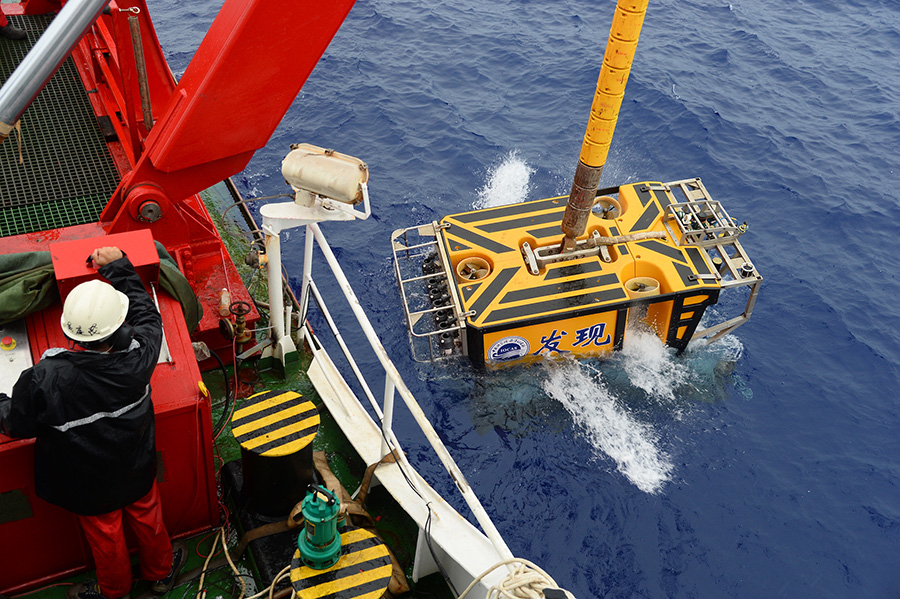Chinese scientists probe unexplored Pacific seamount
 |
|
A remotely operated diving vehicle is launched to explore the Caroline seamount in the western Pacific Ocean on Monday. ZHANG XUDONG/XINHUA |
ABOARD KEXUE-Chinese scientists began exploring a seamount called Caroline in the western Pacific Ocean for the first time on Monday, using a remotely operated diving vehicle to take measurements, record videos and collect samples.
Part of the Caroline Ridge in the Pacific Ocean, the Caroline seamount is located in the southern Mariana Trench, the deepest place on Earth, in what's called the Yap Trench. It has never been explored.
The top of the seamount is an oval basin 28 meters below the surface. It's 28 kilometers long and 9.3 km wide, according to data collected by the scientific ship Kexue in the last two days.
Kexue's remote vehicle will investigate the south side of the seamount, recording videos and collecting topographic information and biological samples, said Xu Kuidong, chief scientist aboard the ship and a Chinese Academy of Sciences researcher.
"We see many seagulls and flying fish in this area, so we believe that this seamount is rich in biological diversity," Xu said.
Before the voyage, Chinese scientists investigated two other seamounts in the area, and they will compare the geology, biology and ecology of all three.
"The distance between the two seamounts we investigated before is only 180 kilometers, but they have only 12 percent common biology," Xu said. "It's very interesting to find out what Caroline has, and to study the differences of the three seamounts and the reasons behind them."
A seamount is a mountain rising from the ocean floor that does not reach the surface, and thus is not an island, islet or rock. Seamounts are typically the remains of extinct volcanos that rise abruptly from the seafloor from 1,000 to 4,000 meters.
Interactions between seamounts and underwater currents, as well as their elevated position in the water, attract plankton, coral, fish and marine mammals.
More than 30,000 seamounts have been mapped, but only a few have been studied in detail by scientists.













